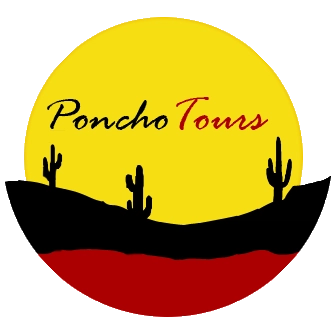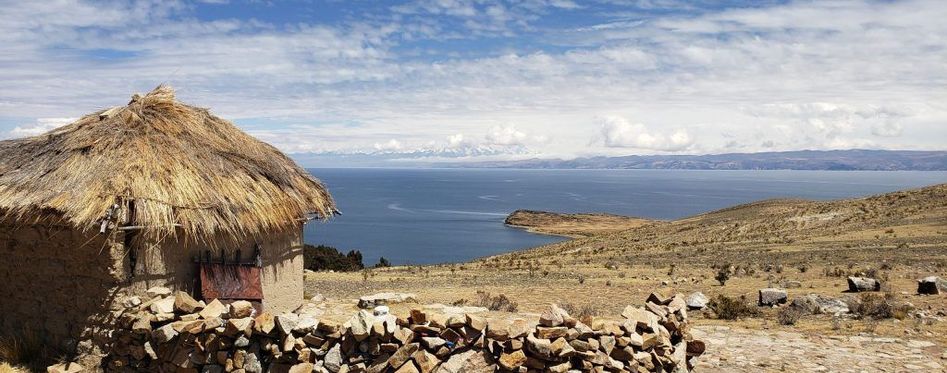Bolivia is famous for its salt flats, the Salar de Uyuni, and Peru is rightly celebrated for Cusco, Machu Picchu and the Inca trail, but there is much more to discover in these predominantly indigenous countries.
I returned recently to Isla del Sol (after first visiting in 1999!): it’s the biggest island on Lake Titicaca.
A tour we think you'll love
Titicaca is the highest altitude lake in the world at 3,812m altitude; with a surface area of 8,300km², it’s slightly smaller than Puerto Rico.
Titicaca means “stone cat” in the native language of Aymara, still widely spoken in Bolivia and Peru, the two countries which share the lake. (It probably refers to a puma, which are native to the area, rather than your pet tabby.)
Isla del Sol has always had a religious and historical significance, being the birth of the Inca legend.
Though there are various creation myths (all refracted through the lenses of colonial scribes, and therefore less than 100% reliable) one recounts that the Supreme Being Viracocha emerged from the lake to create the world.
Among those creations were Inti (Sun) who, despairing at the parlous state of mankind (plus ça change), summoned his own children from the depths of the lake at the beginning of the 13th century: these were the first Inca (King) Manco Capac and his sister Mama Ocllo.
The couple, soon married despite their family connection, headed north and founded Cusco, the capital of what would become an immense empire stretching for 3,000 miles along the Andes, from Ecuador and Colombia in the north as far down as Mendoza and Santiago in the south.
On to more practical matters: what to do in Lake Titicaca and how to get to Isla del Sol…
Boats from the nearest town on the Bolivian side, Copacabana, take just over an hour, and most stop at Yumani on the nearest (south) side of the island.
This is the most heavily populated part of Isla del Sol, home to roughly 3,000 people, who make their living from fishing, agriculture and tourism.
The small town is built steeply into the hillside: an impressive Inca staircase of more than 200 steps rises sharply up towards the biggest selection of hostels and restaurants.
My wife Alicia and our 17-year-old son Calixto eschewed the climb and stayed at Jacha Inti hostel just above the beach, offering wonderful views of the bay.
Our delightful hostess Veronica cooked delicious dinners of trout from the lake, organised our washing, and even helped negotiate the opaque boat service to the northern side of the island, which hosts the impressive Inca ruins of Chincana.
Alicia and I joined a group led by an excellent, attentive and sensitive local guide called Calixto Ramos Ticona, who also showed us the Sacred Stone, possibly used for animal and human sacrifice in pre-colonial times.
From the ruins nr Challapampa, Alicia and I walked the full length of the island (approx. 10km), along an old Inca trail, many parts of which are well preserved, to return to Yumani.
Reaching altitudes of 4,000m, this hike is not to be rushed; it offers outstanding views in both directions, and if you’re lucky, encounters with friendly locals.
One old chap stopped work in the fields just to chat to us: hopefully tourists are a welcome sign that life is returning to some normality after Covid.
Rather than taking a day trip from Copacabana as many people do, I’d recommend at least a night in Isla del Sol to bask in the tranquility and spiritual calm of the place (we stayed two). The best time to visit is outside high season of January to March and July and August.
Incidentally, in Copacabana town itself the basilica of the 17th century church is well worth a visit: home to another legend, the Virgin of Copacabana who is the patron saint of Bolivia and equally revered in the Quebrada de Humahuaca, Jujuy. The more famous beach in Rio de Janeiro is named after it.
A word of warning: Both in Isla del Sol and Copacabana there is an absence of any kind of official tour information.
Even speaking Spanish as we do, visitors are forced to resort to asking operators when the next boat is due: some locals have a vested interest in telling you they are not sure, so you’d best take a private trip with them.
The difference can be between 30 and 300 bolivianos (US$4.50 and US$45): so it’s best to be patient, wait for other tourists to arrive, and club together.
See our Instagram for photos of our trip to Isla del Sol.
Quirky footnote: Lake Titicaca has been home to the Bolivian navy ever since neighbours Chile stole their coastline in the controversial War of the Pacific of 1879. Chile, strongly encouraged by their British trade partners, stole land in the Atacama and Antofagasta rich in nitrates, bird guano (for fertiliser) and saltpeter (for gunpowder).
The dispute has been rumbling on through the corridors of the UN ever since without reaching resolution: indeed I wrote a note about it for the Daily Telegraph back in September 2015.





